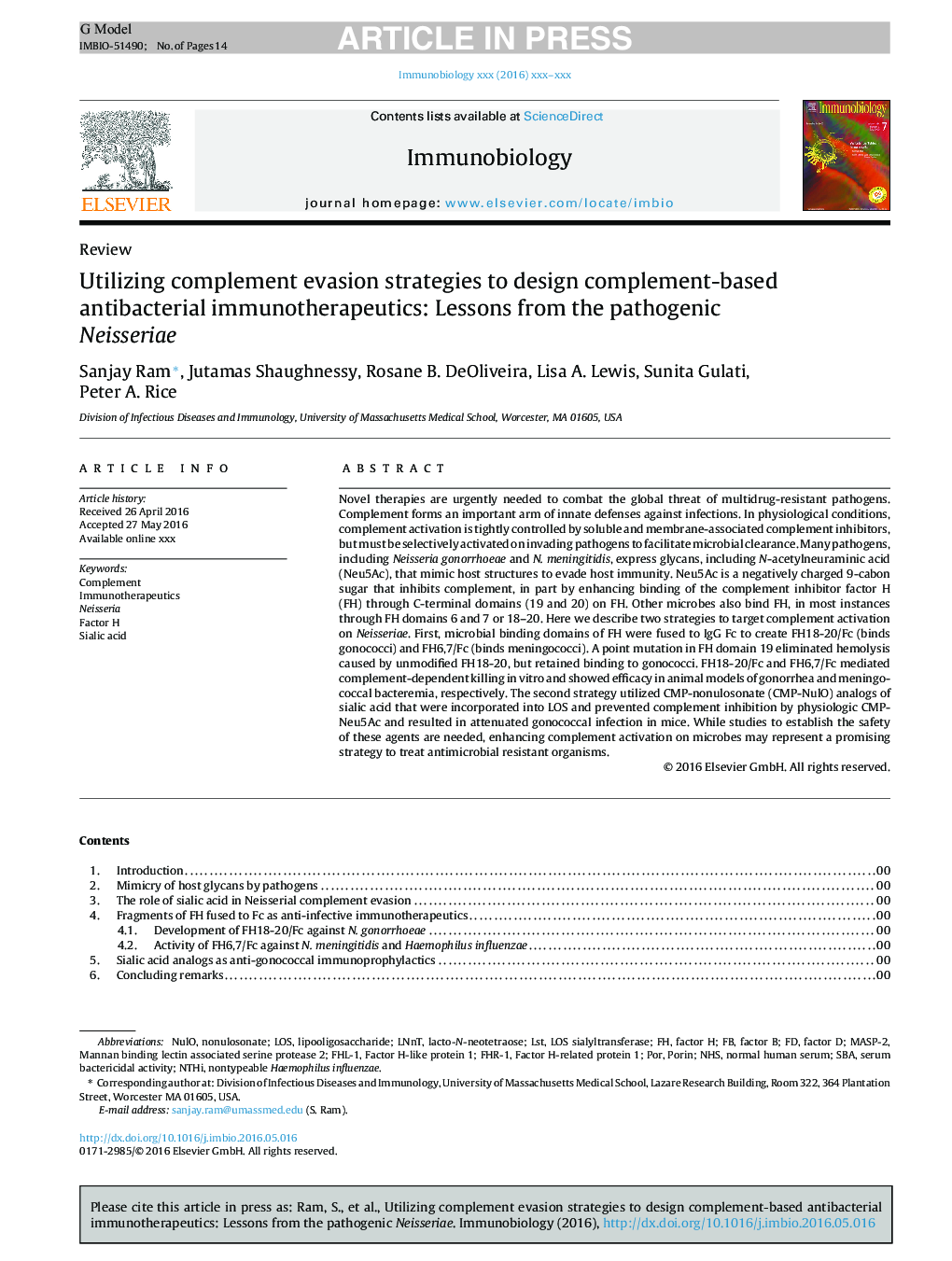| Article ID | Journal | Published Year | Pages | File Type |
|---|---|---|---|---|
| 10940674 | Immunobiology | 2016 | 14 Pages |
Abstract
Novel therapies are urgently needed to combat the global threat of multidrug-resistant pathogens. Complement forms an important arm of innate defenses against infections. In physiological conditions, complement activation is tightly controlled by soluble and membrane-associated complement inhibitors, but must be selectively activated on invading pathogens to facilitate microbial clearance. Many pathogens, including Neisseria gonorrhoeae and N. meningitidis, express glycans, including N-acetylneuraminic acid (Neu5Ac), that mimic host structures to evade host immunity. Neu5Ac is a negatively charged 9-cabon sugar that inhibits complement, in part by enhancing binding of the complement inhibitor factor H (FH) through C-terminal domains (19 and 20) on FH. Other microbes also bind FH, in most instances through FH domains 6 and 7 or 18-20. Here we describe two strategies to target complement activation on Neisseriae. First, microbial binding domains of FH were fused to IgG Fc to create FH18-20/Fc (binds gonococci) and FH6,7/Fc (binds meningococci). A point mutation in FH domain 19 eliminated hemolysis caused by unmodified FH18-20, but retained binding to gonococci. FH18-20/Fc and FH6,7/Fc mediated complement-dependent killing in vitro and showed efficacy in animal models of gonorrhea and meningococcal bacteremia, respectively. The second strategy utilized CMP-nonulosonate (CMP-NulO) analogs of sialic acid that were incorporated into LOS and prevented complement inhibition by physiologic CMP-Neu5Ac and resulted in attenuated gonococcal infection in mice. While studies to establish the safety of these agents are needed, enhancing complement activation on microbes may represent a promising strategy to treat antimicrobial resistant organisms.
Keywords
Related Topics
Life Sciences
Biochemistry, Genetics and Molecular Biology
Cell Biology
Authors
Sanjay Ram, Jutamas Shaughnessy, Rosane B. DeOliveira, Lisa A. Lewis, Sunita Gulati, Peter A. Rice,
